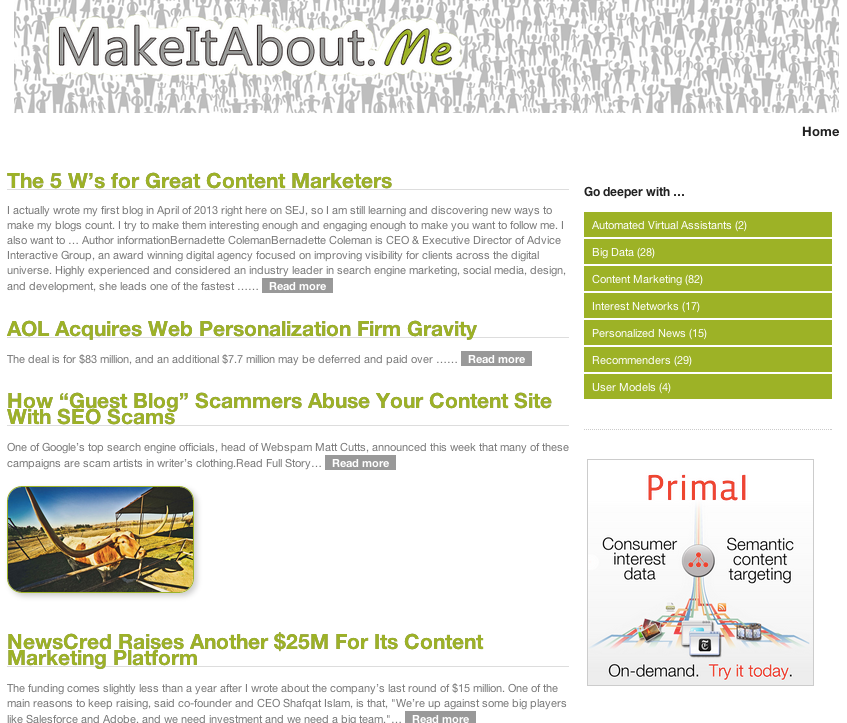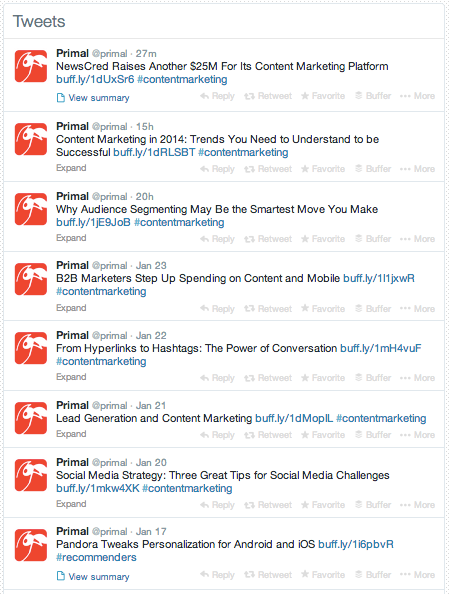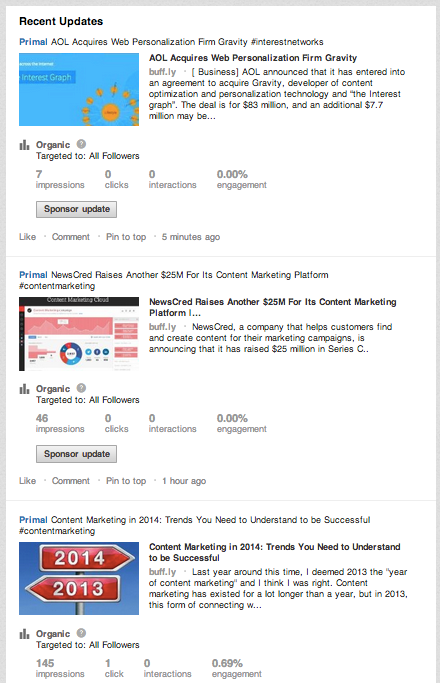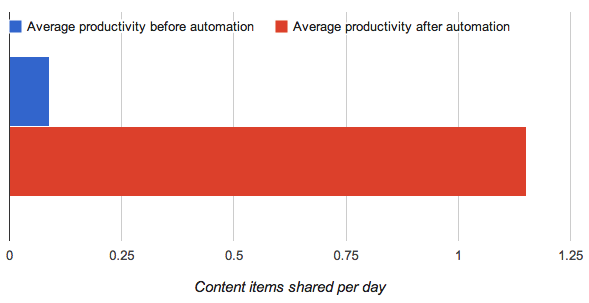Adding Automation to Human Content Curation
Content curation, the activity of collecting, organizing, and presenting information of interest to a target audience, is an essential component of content marketing.
As in many areas of marketing, aspects of content curation are being automated. Marketers are exploring how smart machines can help improve their productivity and performance. Automated content curation, however, is a young field and it’s difficult to separate the promise from the hype.
At Primal, we’re well aware of the importance of curation, but constraints of time, money, staffing left us unable to pursue sustained campaigns in content curation. As such, we wanted to explore how automated systems could be used to improve our efforts.
In this post, we’ll outline how we incorporated automated content curation into our activities and what we learned about its impact on marketing professionals.
The Challenges in Content Curation
Cost Constraints
Despite the merits of content curation, there are serious barriers to entry. First and foremost is the time and effort curation requires. For most small- and mid-sized businesses, the burden of finding relevant content that helps tell their corporate story is an exhaustive process that requires countless hours of precious time.
With an exponential increase in the content supply, manual content curation is simply too expensive to pursue in a consistent and systematic way. For our project, we recognized that any solution we implement must reduce the time required for curation from hours a day to minutes.
Quality Constraints
Content curation isn’t merely an aggregation of content. It’s a process of storytelling, organization and editorial around your company’s brand and purpose that creates a landscape of audience engagement.
Given the complexity of this activity, concerns around content quality often outweigh considerations of cost. Quality considerations have frustrated many past attempts at automated content curation, leaving epithets of spam and link spraying in their wake.
Our project had to meet the following requirements:
- The content must be specifically relevant to our company’s positioning in the market. An aggregation of general-purpose content would only cost us additional time and effort.
- The individual content items must be of high quality, from sources we would feel comfortable endorsing.
Solution Design
Critically, the human content curator is integral to a well-designed solution. In our solution, this person attends to the following activities:
- Curating the trusted sources of content.
- Identifying the topics of interest to the target audience.
- Reviewing and approving individual content items.
The solution we implemented is summarized in the graphic below.

- RSS: As a content pipeline, we registered approximately 6,000 RSS feeds into our system. That may seem like a large number, but we felt this sort of comprehensive coverage was important to our goal of finding high quality information that’s specific to the interests of our target audience.
- Primal: We used Primal’s data service to create an interest graph around the topics of interest to our audience. We use this interest graph as a way to automatically identify a shortlist of highly relevant content items from the thousands of items in the RSS feeds.
- WordPress: We take the content items recommended by Primal and add them to a WordPress site for review by our human curator — a member of our marketing team.
- Buffer: The items selected by our human curator were then queued up in Buffer for scheduling and distribution to our social media channels.
Examples of Curated Content
The content items selected by the system and approved by our content curator are published on a website (see screen cap below).

The list of topics used to identify the interests of our target audience are presented in the green boxes to the right of the screen. This unique collection of topics identifies the interests of our audience.
Selections of the curated content, as distributed through Twitter, are presented in the screencaps below.


Measurement of Costs and Benefits
Development and Operational Costs
The development costs for this system were roughly one developer-week, spent across the following activities:
- Setting up Primal’s interest graph and content sources.
- Setting up a WordPress site and integrating RSS and Buffer plugins.
- Setting up a Buffer account.
Our human curator spends roughly 5-minutes per day reviewing and approving the content items.
Benefits for Social Engagement
The most tangible benefit of the system is a higher rate of social media engagement. Prior to implementing this system, we were unable to find enough time to make social media a consistent part of our marketing mix.
Now, we’re able to consistently engage our audiences on a day-to-day basis. With only a negligible increase in our operating costs, we’ve improved our productivity in this area by almost 12-fold.

Intangible Benefits
Apart from the direct benefits of automation, we discovered a number of intangible benefits that followed from automation:
- Better understanding of our audiences: The system is analyzing a very large number of content items across our relevant market. The data generated, in turn, gives us a much more concrete understanding of the interests of our target audiences. Through the many thousands of topics and content items moving through the system, we’ve gained a more precise understanding of the areas of greatest interest among our audiences.
- Monitoring of competitive and cooperative activities: Related to the point above, this monitoring capability extends to our competitors and prospective partners, as well.
- Employee engagement: No one in our company is dedicated to social media, but everyone uses it. The automation has provided our company with a consistent landscape for social media engagement. Like a ripple effect, our team is building on the conversations started by the system and becoming more engaged in our communities of interest.
Getting Started
If you’d like to build your own automated content curation solution, check out our Developer site to get started.
If you’d like more details on this specific solution or need any help at all, contact us and we’ll send along more information.